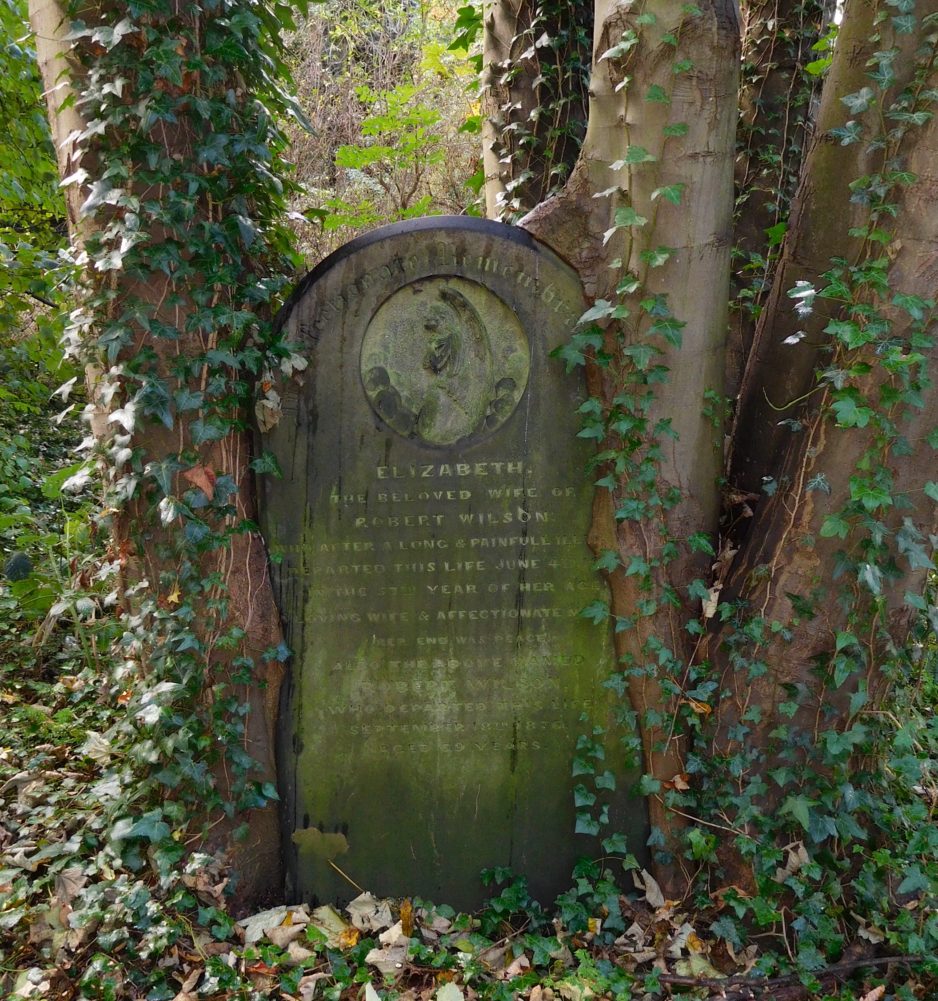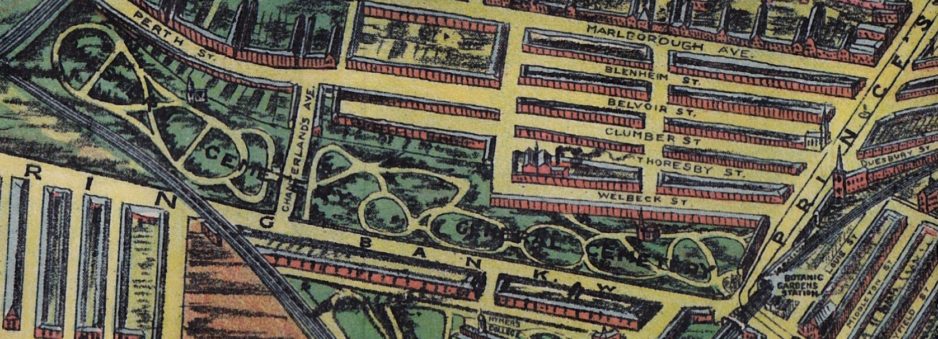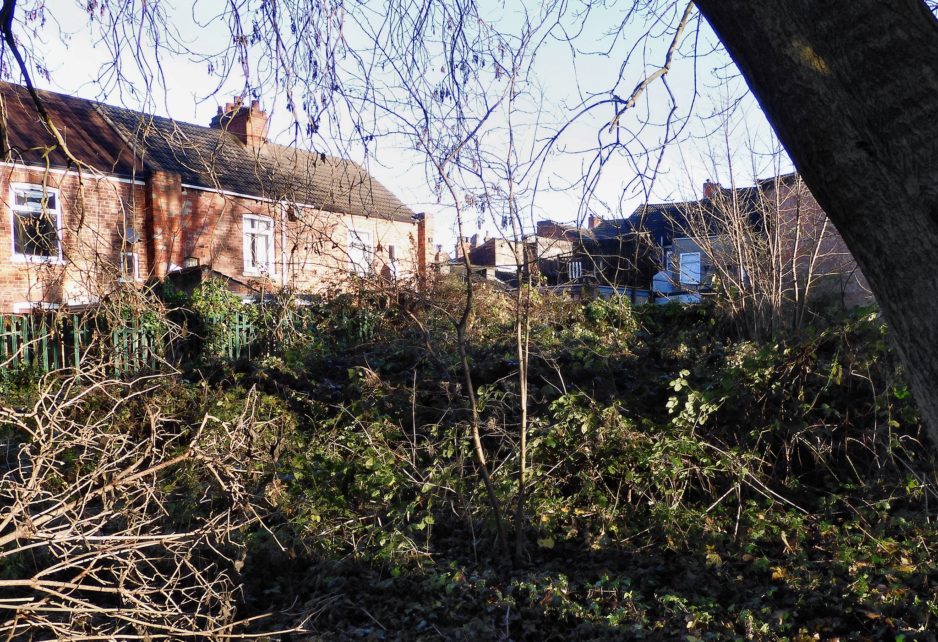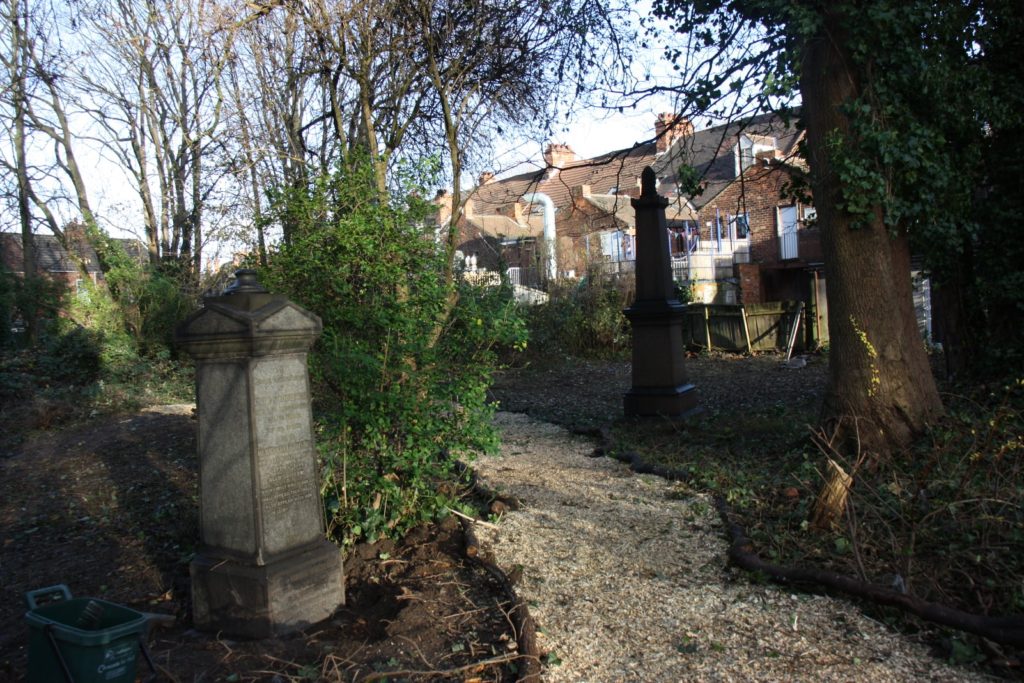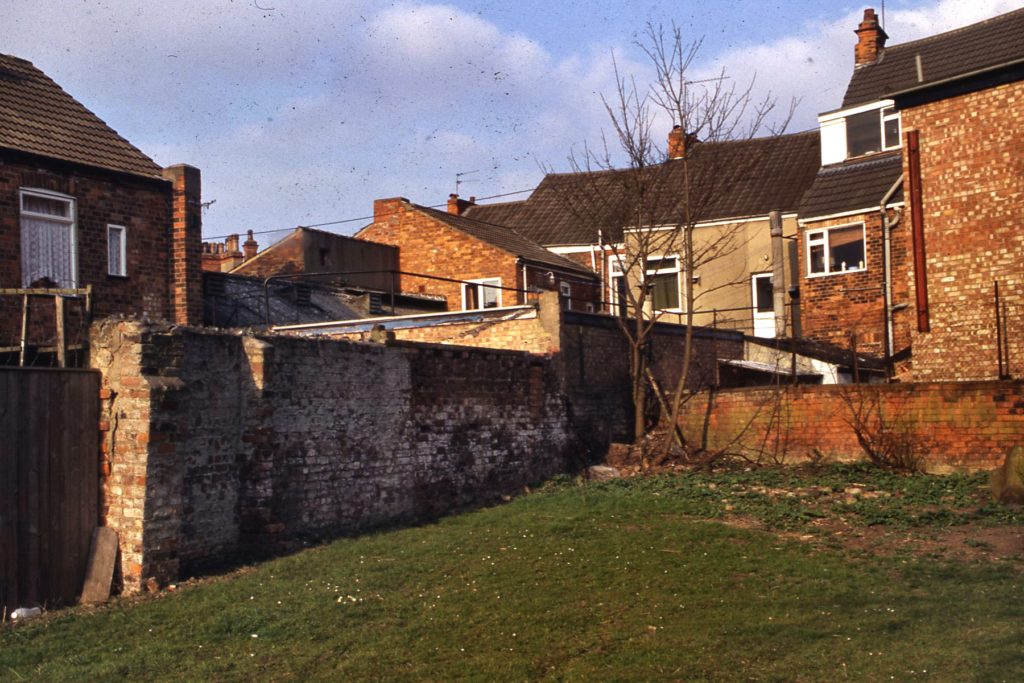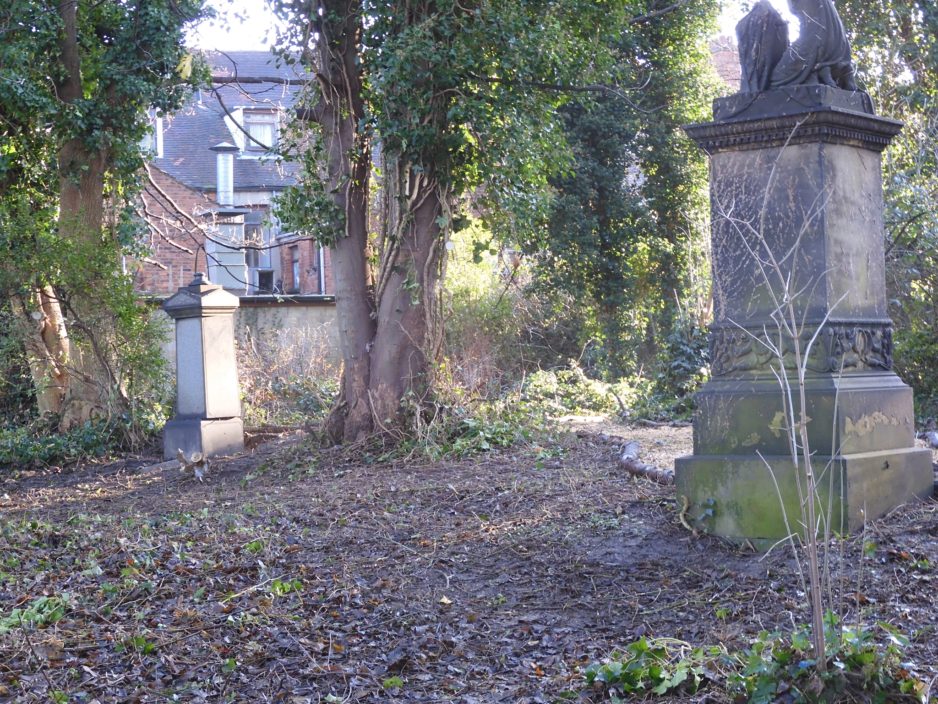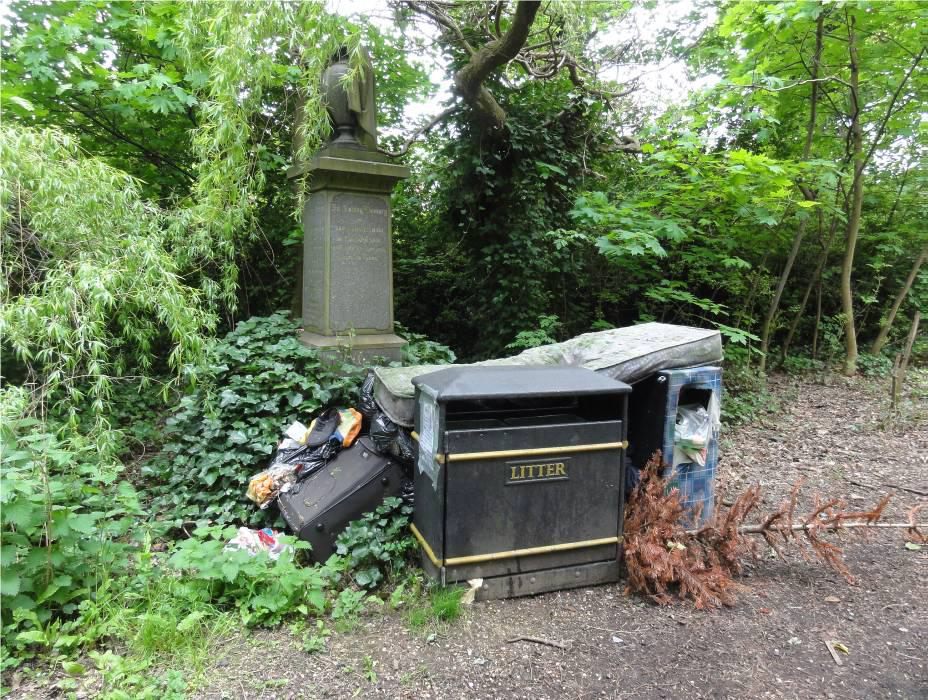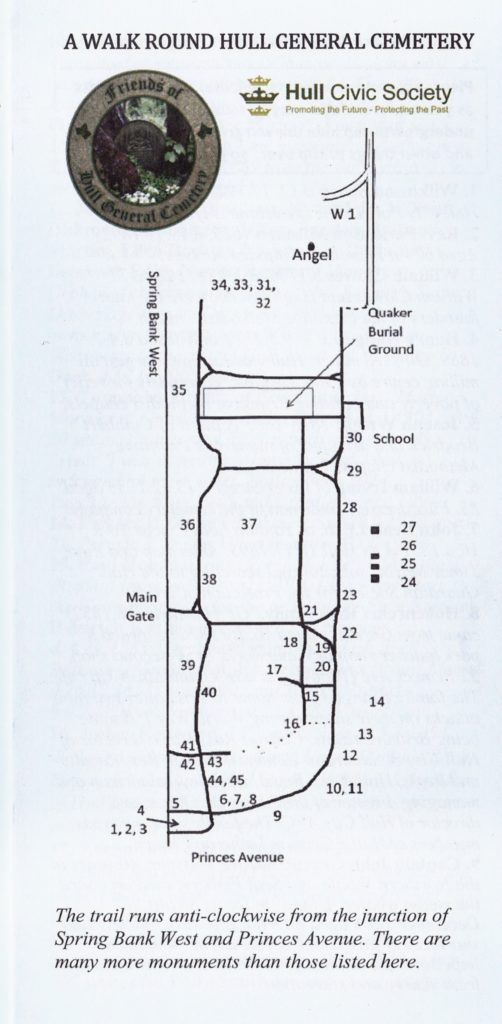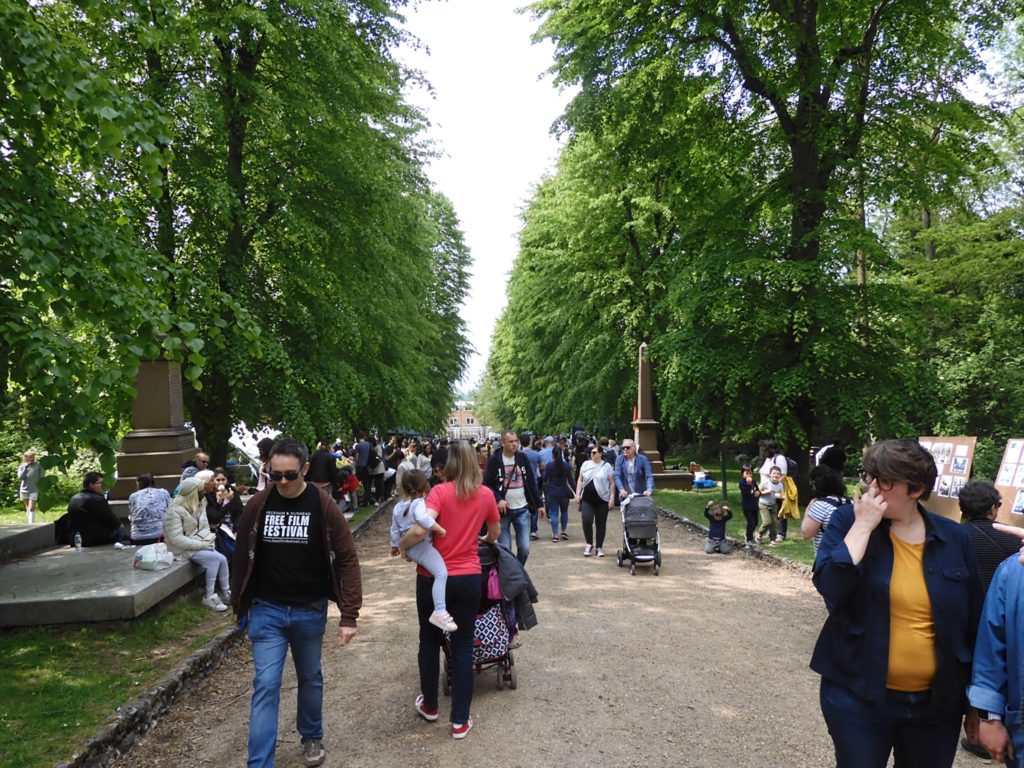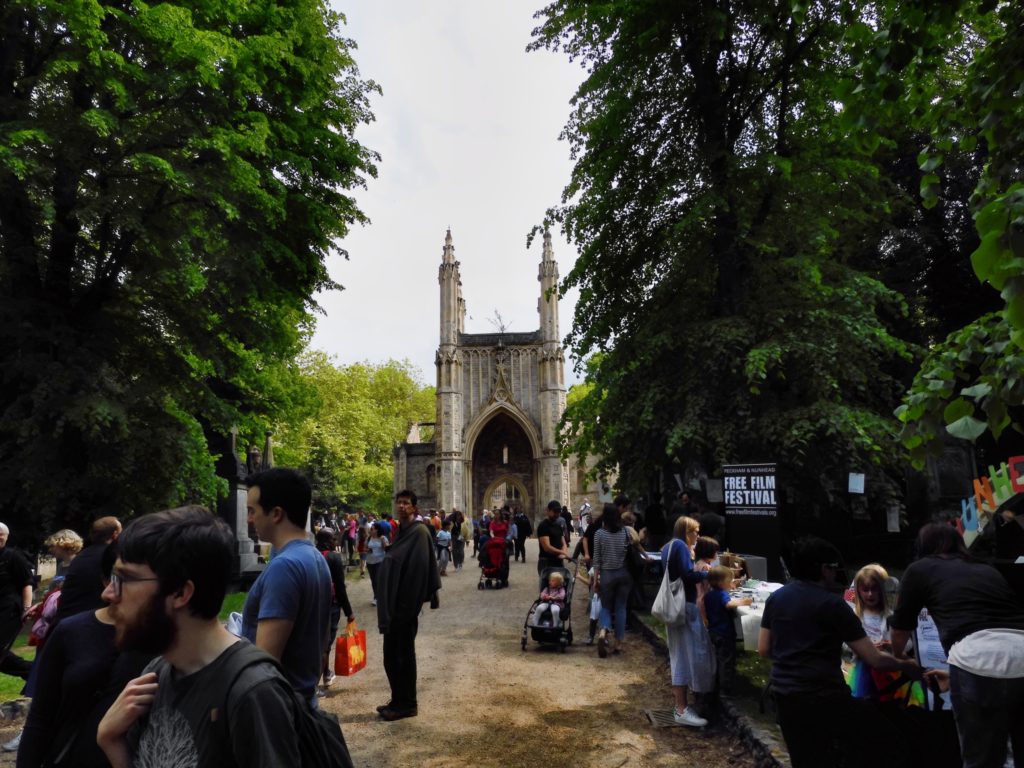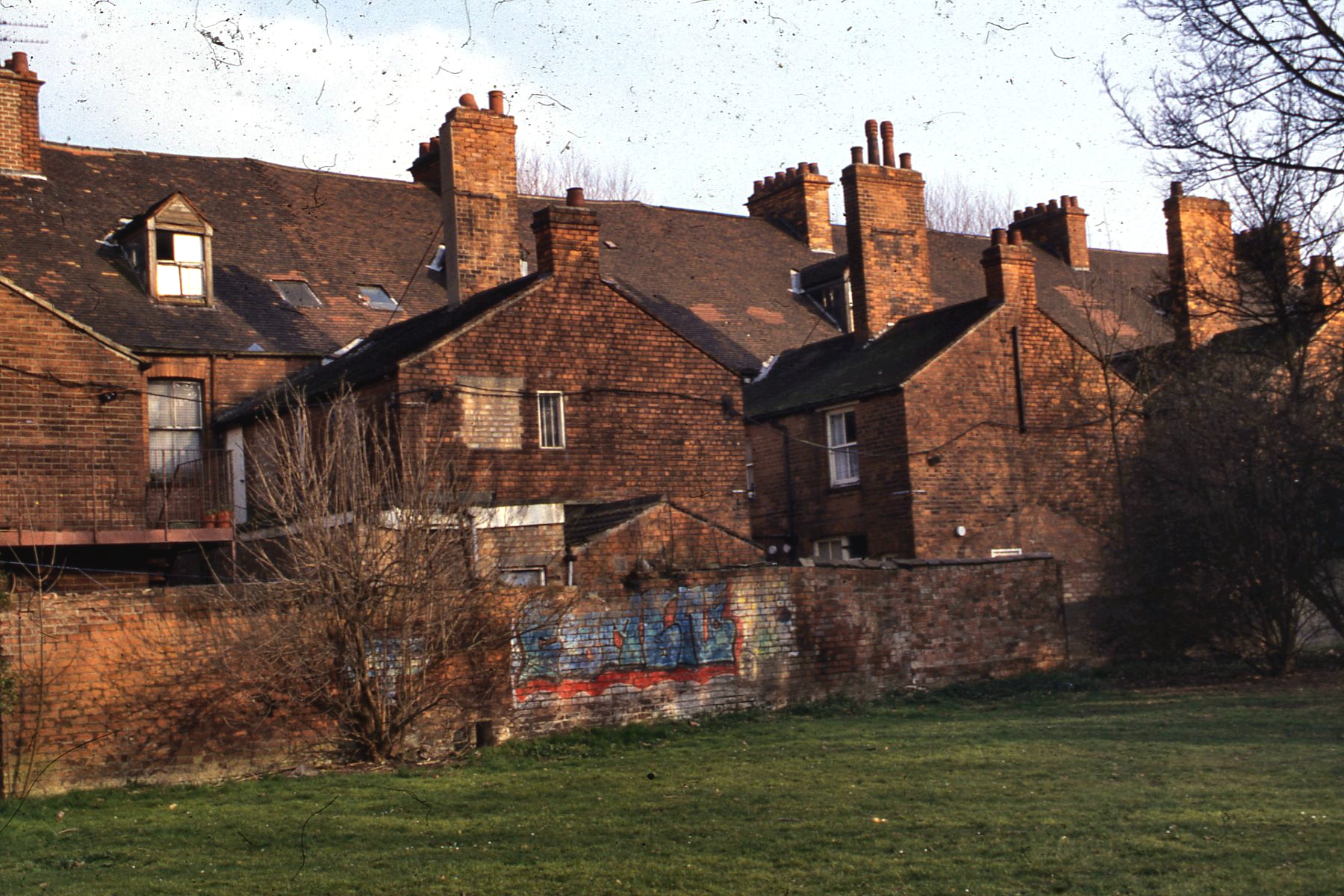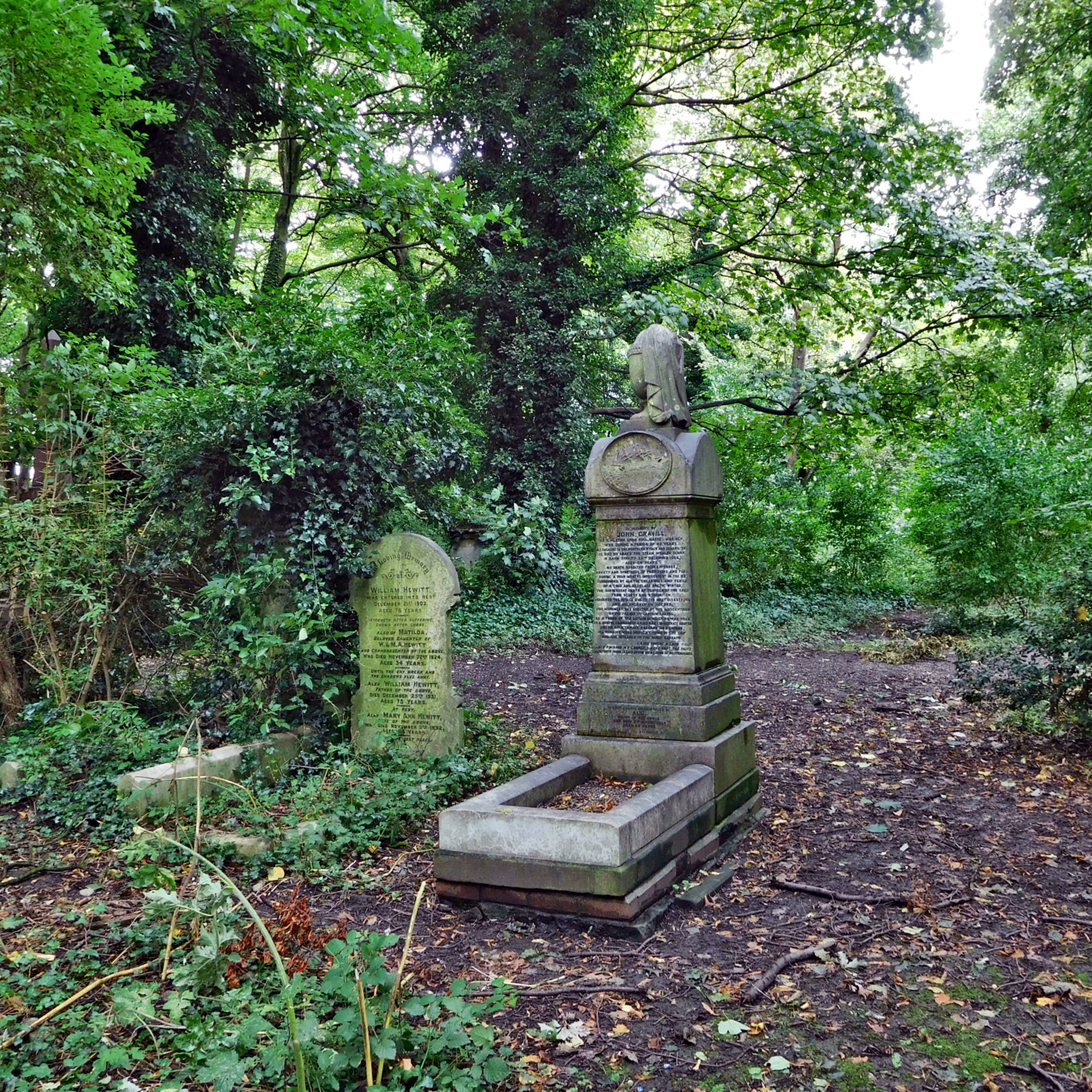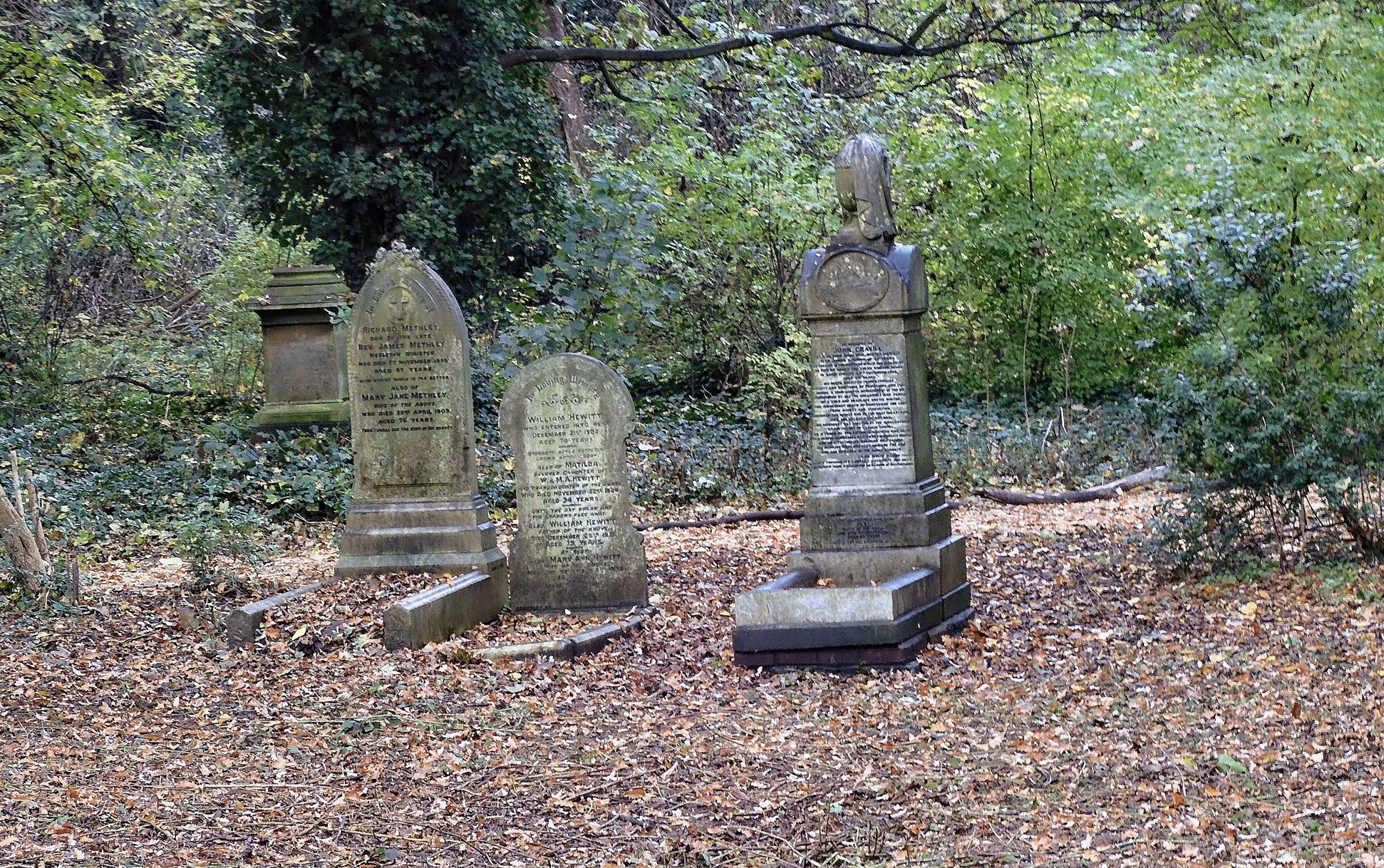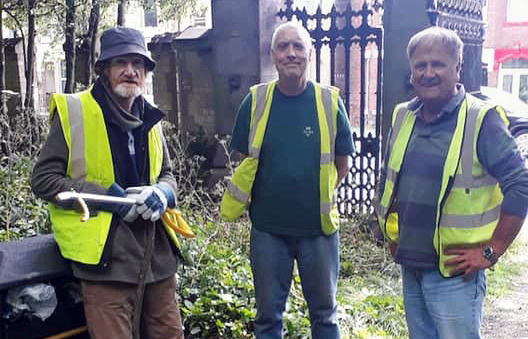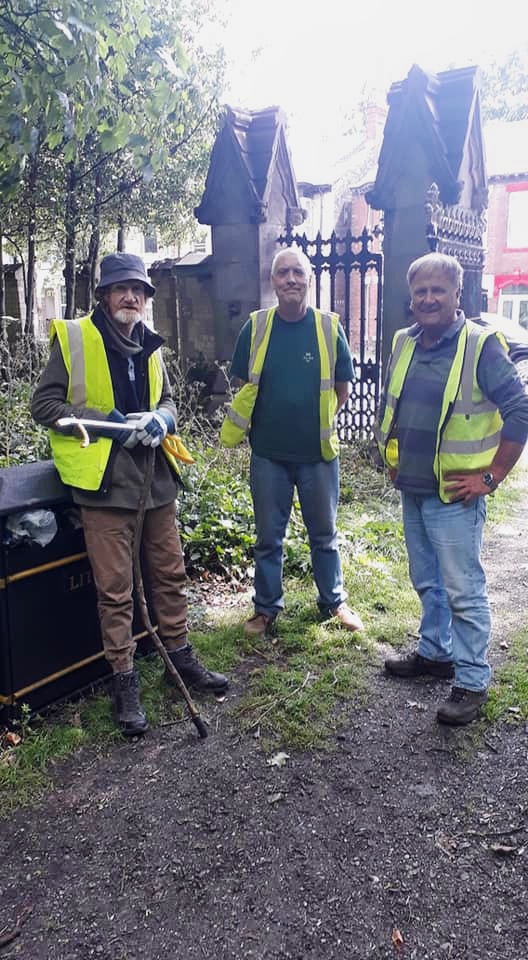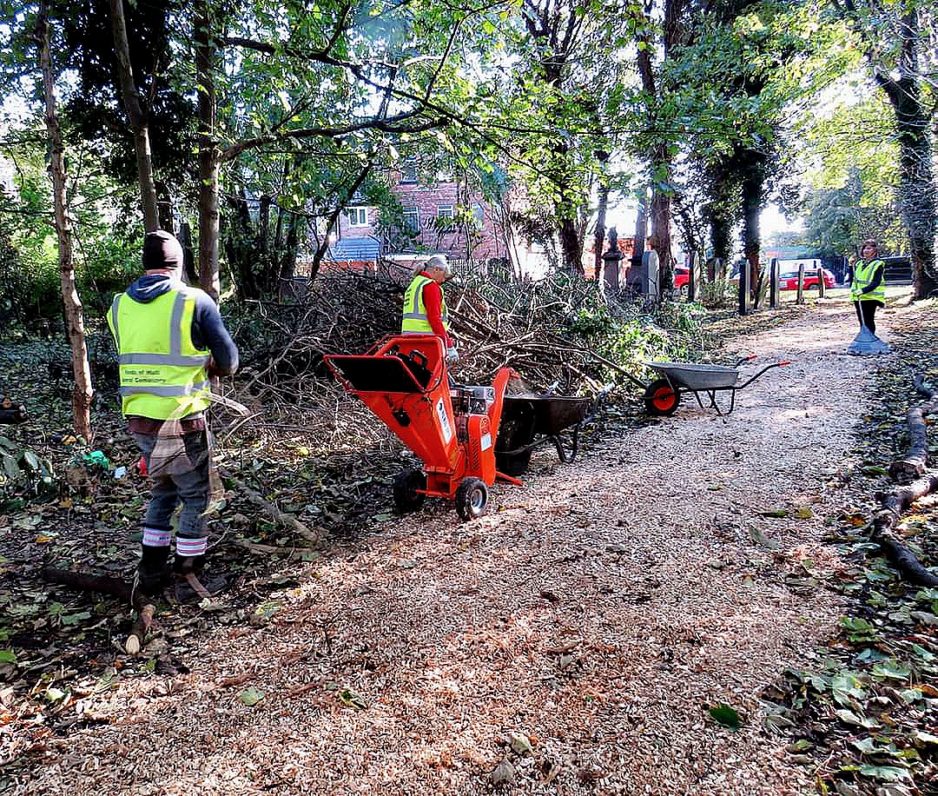Yes I know the phrase ‘Nature versus Nurture’ is not usually used in this context. Going back in time I seem to remember it being a common phrase that was used in late 19th century American Literature when I was studying for my first degree. Going forward I came across it in my work when I was a social worker. It related to children’s upbringing and the environmental factors that could affect it. Here I’m afraid I’m using it to describe the tensions that erupt when changes occur within Hull General Cemetery. Nature versus nurture? Let’s have a look.
Re-wilding
About two years ago Bill and myself were, as usual, going round the site picking up the litter. Plastic bottles, empty beer cans, sweet and crisp wrappers and more unpleasant things were our lot. During this task we always made a point of saying hello to the visitors to the site. This day a young chap responded to our greeting. He said it was great what we were doing and he supported re-wilding. I remember we both looked at each other, then at the litter in our bags, and smiled and nodded.
The young man was busy and rushed away but I would have liked to discuss this idea further. Re-wilding was probably quite far from the ideas Bill and I had for the cemetery. I think we thought it was pretty ‘wild’ in there as it was and that’s why we averaged 5 or 6 bags of litter every two days. You see, ‘wild’ in this context meant uncared for and not maintained.
From that premise, judging by the debris we collected, it was also fine to drop your litter in it. It was also the perfect place to leave your unwanted mattress, your stolen bicycle, your excess kitchen sink and your empty calor gas bottles. This isn’t mentioning the used Durex, human excreta still plastered on toilet paper, used sanitary towels and nappies, maggot ridden food and the ubiquitous hypodermic needle. Yes, it was pretty wild. Nature versus nurture? I don’t think either was winning at that time.

No! Not that kind of wild
Ah, but of course the young man was speaking about a natural re-wilding. You know the kind. Planting of willows and alder to drain boggy areas, allowing other areas to become wetlands, planting species that are native and rooting out the invasive non-native ones. It can also include the re-introduction of vanished species. Otters and beavers are thriving in some parts of the country after being re-introduced and the population of the Red Kite and Golden Eagle are also on the rise. Someone recently suggested the re-introduction of the Grey Wolf but the farming industry would probably resist that.
It sounds great. In the HGC there are a couple of points against this. One, the historical point, I’ll deal with in another post called Re-wilding. The other point is that, at least to my mind, ‘re-wilding’ is not simply planting lots of trees, shrubs etc and then expecting it to prosper. We’ve just come through an age of austerity when council funding for such schemes is low. Again I’ll touch on this more later. No, re-wilding is a lot more complex than just getting your spade out.
Whose job is it anyway?
The overriding problem of a re-wilding project, at least to my mind, is the continual maintenance of the project. This maintenance is necessary to keep it in perfect health. I’ve seen many photographs of schemes where people from the communities, schools, etc get really involved in the initial stages of the scheme i.e. the physical work of the planting. And after that ballyhoo, what then?
Well, if they are organised they will have some plan as to how it will be cared for after the ballyhoo dies down and the community goes back to getting on with its life. You see, like any garden or woodland, it needs to be maintained. That’s where the dedication, and the true costs of the scheme come to bear. Because it’s a lot harder work to keep looking after something than to simply start it up. And I’m quite sure that when that young man was talking about re-wilding he wasn’t thinking about the long term work and running costs to maintain the re-wilding scheme. It was less nature versus nurture than simply nature pure and simple.
As we all know, when it comes to complex problems, you should never, ever, go for the simple solution because it really doesn’t work. Just think about the difference between voting for Brexit, and what it actually turned out to be, to see how a simple solution can cause you more problems. Problems you had no idea were there. Complex problems need a lot of thought and a lot of work to solve them.
No, it’s the Council’s job isn’t it?
Council funding. In a talk I had with an elected councillor and a council officer a couple of years ago I was told the full extent of the budget for Hull General Cemetery. The officer held up his index finger and thumb. He made a circle with those two digits and said, ‘that’s how much the budget is for HGC’. He went on to say that any work that needed to be done in there came from other budgets which obviously made it popular with the other budget holders. This has been the case since the 2010 election.
All in it together
You surely must remember that? David Cameron and George Osbourne telling us we had to tighten our belts and that, ‘we were all in this together’. Well, some of us were more ‘in this’ than others as it turned out.
Large urban centres, especially in the north, suffered drastic cuts to their budgets. In Hull the council funding was cut by about half. As the Hull Daily Mail reported in 2019, ‘Hull City Council has seen £131 million pounds worth of core funding removed since 2010.’ It went on to say that, ‘with the authority’s budget for day-to-day services being more than halved in that period.’ So, now you can see where that HGC budget came from.
Let’s face it, who can seriously argue against that Council decision? Surely the care of young children, the elderly, the rough sleepers, and the people who have fallen through the cracks that central government widened by their savage cuts should come before the interests of a derelict cemetery. I mean Food Banks for the employed. How can that be right? So, yes, Hull City Council has to step in but with less cash to spend. Good call Hull City Council, spend your money where it’s most needed.
But it was always like this, wasn’t it?
One of the refrains that is often heard, especially recently, is that the FOHGC are ‘destroying’ the natural habitats of the the wildlife. That we should leave it as it is. This usually comes from people who want HGC to look like how they first encountered it. It’s a very human reaction. None of us like change especially as we grow older. We cling to familiar things, probably as a valediction that we still exist. I’m just the same but maybe my memories of HGC go back a little further than some.
Back to the future
This photograph was taken in 1977 just as the redevelopment was taking place. The chap on the left is about where the pelican crossing is now and the other chap is waiting at the bus stop. Note the large amount of headstones that were all removed. The infamous Blue Container was sited just behind where the gent waiting for the bus is stood. And, on a less pleasant note, I buried a dead dog, killed in a road accident and left in the gutter, in 1979 under that laurel bush to his left. My memories of HGC go deep. At least a metre.
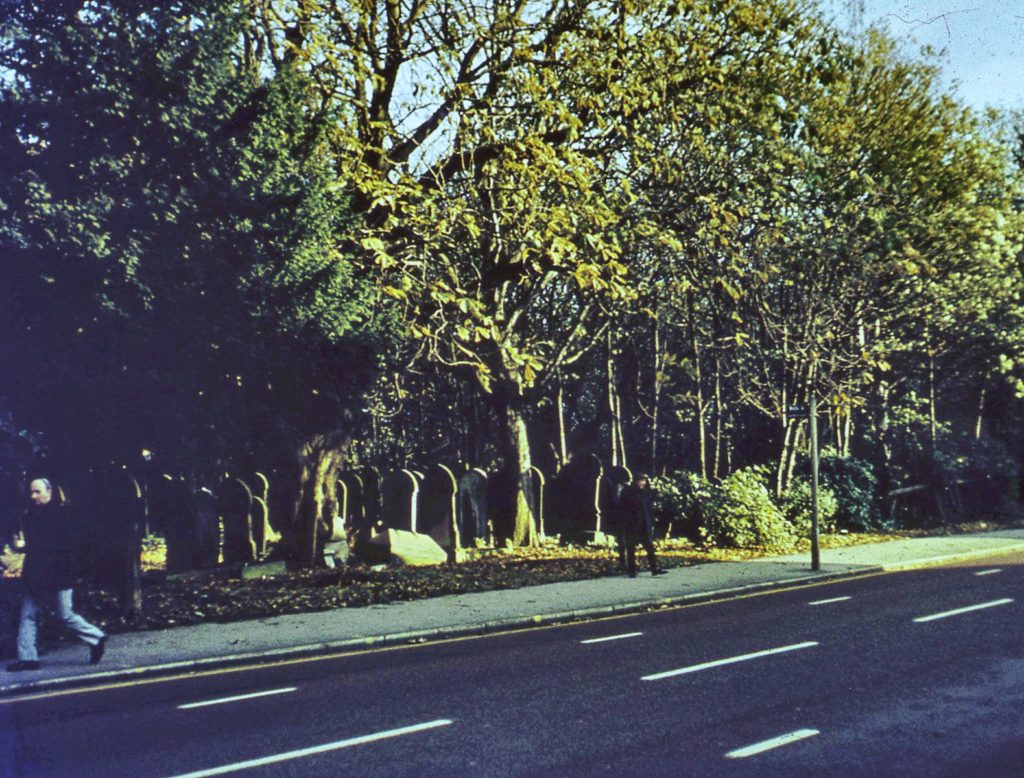
I remember walking past there in the 1950s. Holding my mother’s hand because it was a creepy place. We were visiting my recently deceased maternal grandmother’s grave in Western Cemetery. She was buried not far from the Workhouse portion of HGC. In those days there was a wicket gate at the end of the fence of HGC but we couldn’t use it because the HGC was fenced off from Western Cemetery and we had to walk all the way round to the Chanterlands Avenue entrance. My grandmother died in 1956 and my little legs were tired.
When I walked past HGC on the way to Hull Fair it was different story of course. My little legs were full of beans but I still held my mum’s hand passing it because it was even more scary at night!
Heady Youth
In the 60s it was a fantastic place to play truant. No police or ‘board man’ would ever catch you in there. In the late 60s and early 70s it was a great place to take acid and look for places where you could grow marihuana…. or so I’m told (added on legal advice). By 1974 I was a gravedigger and my first foreman, Frank Coulson, was the last gravedigger that HGC employed in the 1940s. In 1976 I followed the debate around the cemetery which you’ll find fully described in ‘A Momentous Meeting’ on this website next week.
Responsibility
By 1977 I was a shop steward and took an active interest in the safety of the workers in HGC and in 1978, with the introduction of the Health and Safety Act of 1974 finally, I was now the safety representative for the workers in HGC. Unfortunately, the wholesale destruction was now over, and the small gang left in there were planting shrubs on the perimeter of the site next to Spring Bank West. By 1979 I transferred to Western Cemetery and the work force in HGC were disbanded. Any work to be done in there fell to the staff of Western.
Family times
In 1981 I went to university but my involvement in HGC was now more family based. My two boys learnt to ride their bicycles in there. Much safer than on the roads. We had picnics with other families in there. Impromptu cricket games between numerous families were played on the grassy parts. Dogs were walked. Benches were placed in there.
By the beginning of the millennium my involvement lessened. Our dog had died and we have never ever thought that we could replace him. The kids had left Hull for other parts. We walked in there less and less, seeing it become less managed. And more worrying to be honest. This could have been the end of my relationship with HGC.
It wasn’t, but that’s another story. The point of the above is that I have seen HGC in many guises. It has changed many times in my lifetime and will again I’m sure. I try not to see change as a problem but rather as a natural development for us all. After all I’m not the lad I was when I worked in there back in 70s. A little thing called aging has changed me. I can’t do a thing about it. I have to accept those changes. Change is the only constant in the entire universe and those who fail to grasp that are doomed to disappointment.
More immediate angst
And so we come to the recent refrains about some of the work the FOHGC have done recently. They seem to centre on the fact that what they felt was constant was not. That a dense thicket of blackberries along the back of the shops was ‘always there’ and therefore was immovable. In some sense their argument seems to not grasp that nature itself changes but we’ll leave that one.

Here’s the area in question in 1996. You may notice a complete absence of blackberry bushes. You may also notice that the grass was cut. The absence of litter should also hold your attention.
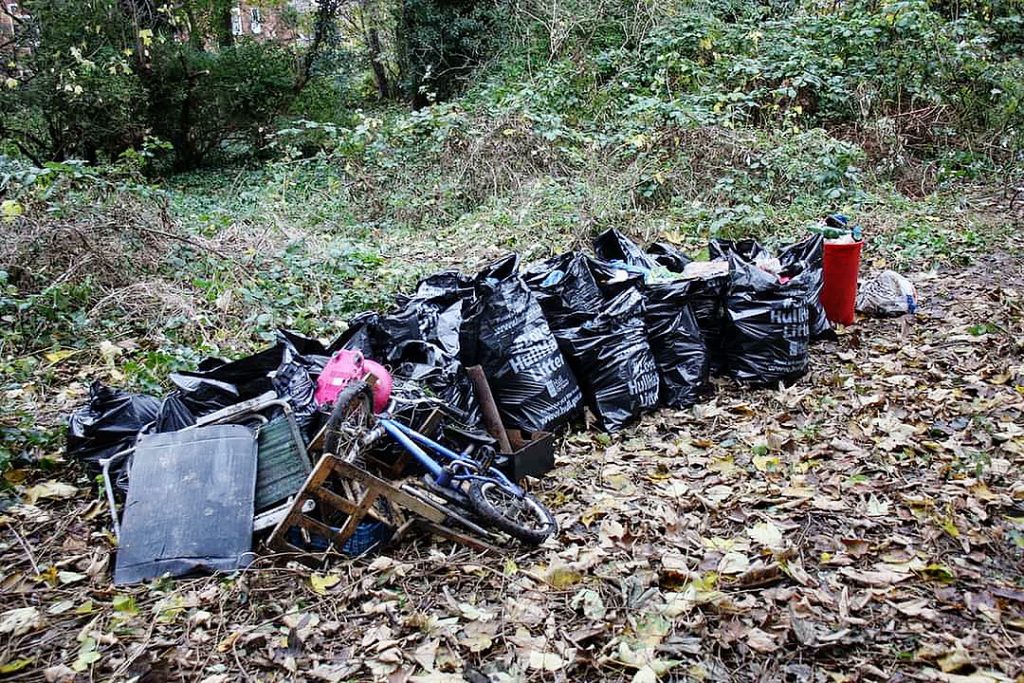
Here is a recent picture of the same scene from a different standpoint with a collection of rubbish picked up before the work started. Is this the bedrock upon which the ‘naturalists’ base their arguments upon? This is the end result of blackberry bushes being allowed to grow without management. How natural!
No. That’s not what I meant
I’m sure that’s what the cry will be. And I’m equally as sure that the cry is heartfelt. But the reality is clear. To achieve having a thriving natural habitat it needs a degree of management. And sometimes that management has to be severe. It needs the rubbish that has accumulated to be cleared. To clear that rubbish it needs a degree of cut back. And that cutback leaves debris that then has to be cleared.
I spoke with one of the people who criticise this kind of management just last year, before Covid struck. He put forward a plan of annual staggered clearances based upon an area by area approach. I thought the plan had merit. It worked within the limits that the volunteer group could achieve. It also would allow regeneration on a scale that should allow the wildlife to recover. Both of us thought, looking at the size of HGC, that it would probably be a plan for between seven to ten years to cover the entire site. At the end of that cycle we could begin again at the first area and this approach would be less disruptive to the wildlife. I told him that the volunteers had earmarked the area behind the rear of the properties on Princes Avenue for this kind of work, and perhaps this could be the first area that could fit into his plan. He thought this was a good idea and readily agreed.
The pandemic has changed us all, of that there is no doubt. But I’m struck by the fact that the proposer of a plan is now being critical of his own plan. It just goes to shows how insidious the virus must be. Well, that’s the only valid and rational reason I can see for someone morphing from a cheerleader for a project to being an outspoken protestor against it.
A rare sighting of the armchair naturalist
If anyone really thinks that cutting back the blackberry bushes has killed them and that they won’t return then they should take time out to do some research. They will, of course, regrow but without the human filth all about them. How can that be seen as bad?
No, I’m afraid that fundamentally we have here the sad tale of people frightened of change. And of course I have yet to see any of these ‘armchair naturalists’ actually in HGC scraping the excrement off their gloves whilst trying not vomit and crying, ‘Gee, isn’t nature wonderful?’
The motto of all of this should be that it is not nature versus nurture at all. It should be that nature needs nurturing. Instead of carping, why not lend a hand?

Pete Lowden is a member of the Friends of Hull General Cemetery committee which is committed to reclaiming the cemetery and returning it back to a community resource.

